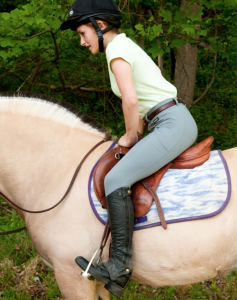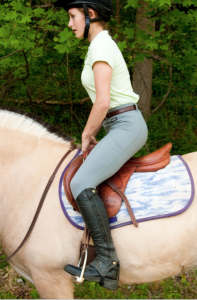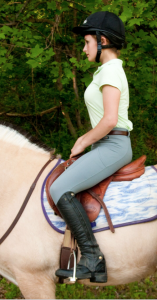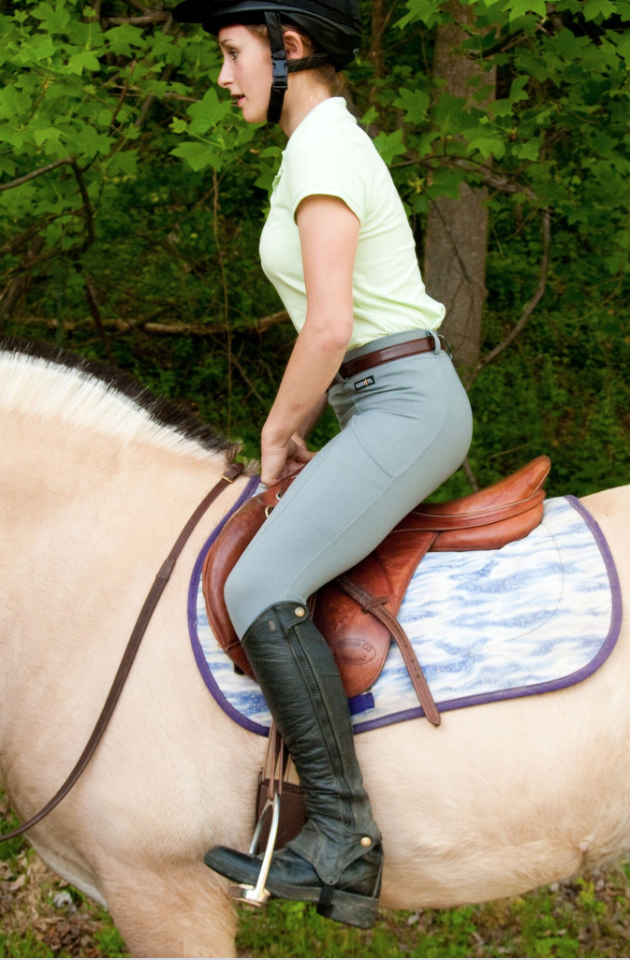
Do you wonder if your leg is in the right position? Can you see your feet in front of your knees? Do you jam your heels down? Are you out of sync in the rising trot? Here’s a quick tip to help you self-check your leg position and get your balance right.
Next time you ride notice if your leg is underneath you, in front of you or pulled back. Do you push yourself out of the saddle with your feet in rising trot? Do you lead with your chest as you rise? Do you have knee pain or brace your heels down? A leg position that is stiff and braced can cause your horse to hollow his back when you ride not to mention create back pain in you and your horse.
When riding it is important to consider the effects of gravity. The classical alignment of ear, shoulder, hip and ankle minimizes gravitational effects when we ride. If your legs are braced forward or pulled back you are more susceptible to being thrown about by the horse’s movement but more importantly your horse bears the brunt of your weight on his back instead of distributing your weight around his ribcage. To reduce the pressure on his back it is important to have your leg underneath you. Not only does this ease his back it keeps you in time with your horse’s movement.

Here is an exercise you can use as a simple test for the correct leg position. If you have a mirror stand your horse parallel to it or have a friend act as your mirror to make sure you are not deceiving yourself into thinking your leg really isn’t moving during the exercise.
Put both hands on the pommel of the saddle. Using your hands to pull yourself up as you just begin to stand up in the stirrups. The goal is not to stand but to almost stand. You want to initiate the action of standing but not actually stand. The cloth of your breeches should still be on the saddle when you do this lesson correctly.
As you just begin to stand do you throw your chest forward or push your heels down? Does your leg swing forward? If so, stop and readjust your leg so that it is underneath you again. This time think of standing vertically with no forward movement. Are you in position to do this? If not adjust your foot so that it is flat to the ground and begin again.
When your leg is in the correct position you can just begin to stand without your leg moving at all. The standing movement is a very small. The point is that you pay attention to the first thing you do when you think of standing in the saddle. If you brace your heel or tip forward you will brace against the stirrup in rising trot instead of leaving your leg under your body.

Use this Murdoch Minute to self-check your leg position. With your leg under you your weight is distributed around the horse not just on his back. With your leg under you your rising trot will become smooth and you will be in time with your horse’s movement so that you will enjoy the ride!




